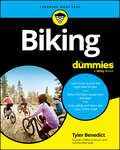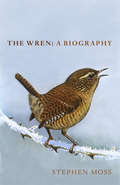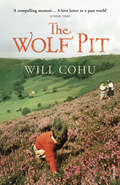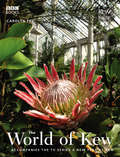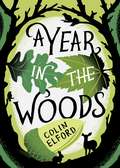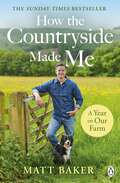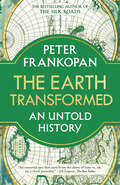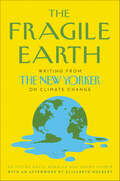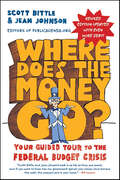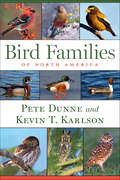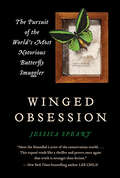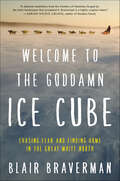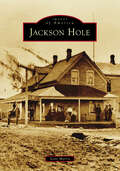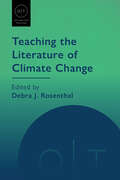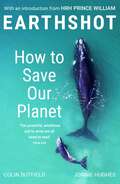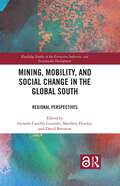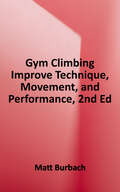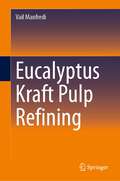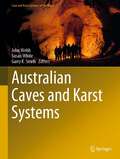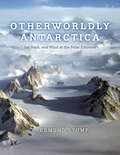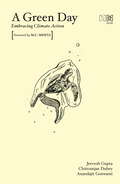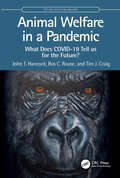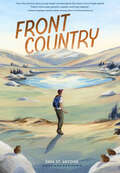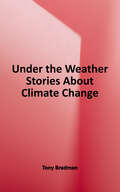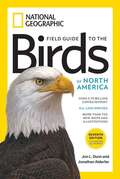- Table View
- List View
Biking For Dummies
by Tyler BenedictExplore, travel, and get fit on two wheels Biking For Dummies will teach you the basics of riding your bike as a workout or as a mode of transportation. Great for people of all ages and fitness levels, this book shows you how to select the best bike for your needs, how to ride safely, and how to maintain your bicycle, so you can enjoy the many adventures that lie ahead. This entertaining Dummies guide answers all your questions about e-bikes, cycling etiquette, must-have gear and gadgets, and staying safe out there. Plus, you’ll find bicycle maintenance advice and tips that will help you get faster and ride farther, even if you’re starting from zero. Become a cyclist, the Dummies way. Choose the right bike for you and find places to ride it Use correct form, learn the rules of the road, and enjoy every ride Learn to keep your bike or e-bike in good shape for years to come Discover which equipment you need, and which you can live withoutBiking For Dummies is for beginners who want to start cycling, and for experienced riders looking for reliable info. Start with a quick ride around the block and branch out to long rides and exciting cycling vacations. There’s no limit to where two wheels can take you.
The Wren: A Biography (The Bird Biography Series #2)
by Stephen MossFrom the bestselling author of The Robin: A Biography, Stephan Moss:The wren is a paradox of a bird. They are Britain's most common bird, with 8.5 million breeding pairs and have by far the loudest song in proportion to their size. They also thrive up and down Britain and Ireland: from the smallest city garden to remote offshore islands, blustery moors to chilly mountains. Yet many people are not sure if they have ever seen a wren. Perhaps because the wren is so tiny, weighing just as much as two A4 sheets of paper, and so busy, always on the move, more mouse than bird.However if we cast our eyes back to recent history wrens were a mainstay of literary, cultural and popular history. The wren was on postage stamps and the farthing, it featured in nursery rhymes and greetings cards, poems and rural 'wren hunts', still a recent memory in Ireland particularly.With beautiful illustrations throughout, this captivating year-in-the-life biography reveals the hidden secrets of this fascinating bird that lives right on our doorstep.
The Wolf Pit
by Will CohuIn 1966 Will Cohu's grandparents moved to Bramble Carr, a remote cottage on the Yorkshire moors. The summers and winters he spent there were full of freedom and light; only after childhood ended was he aware of the price the adults had paid for life in this most romantic of settings.Navigating family tensions and the trials of growing up, Will describes the close-knit community of North Yorkshire and his family's place within it: the shepherd probing the head-high snowdrifts for his flock; the pub landlord obsessed with military uniforms; the village doctor lost in his love for the purple moorland; Will's glamorous RAF parents; and, at the centre of the story, his beloved but enigmatic grandparents.The Wolf Pit is an enquiring love letter from Will Cohu to his family, and to a changing rural England that is passionate, frightening and funny.
The World of Kew
by Carolyn FryWithout plants, there would be no life on earth. Kew Gardens is famous for its breathtaking displays of flowers and tree,s but this World Heritage Site is also a globally important scientific and historical organization. Scientists and gardeners use the plants and knowledge that have been collected at Kew since the eighteenth century to advance understanding of the earth's environment and of how plant lfe can be used for human benefit. Published to accompany the ten-part BBC2 series A New Year at Kew, this fascinating book takes us behind the scenes to show the extraordinary range of work carried out at Kew Gardens and Wakehurst Place - home to the Millenium Seed Bank - and by Kew staff overseas. From using forensic botant to micropagating plants facing extinction, from investigating herbal cures from Alzheimer's disease to replanting the volcano-ravaged island of Montserrat, the book shows us aspects of Kew's work that are largely hidden from view abut the benefits of which are far reachingl In the process it provides an absorbing and accessible introduction to such topical subjects as biodiversity, practical conservation and economic botany. Lavishly illustrated and filled with engrossing stories and engaging characters, this book brings to life the world of Kew and the global importance of its work.
A Year in the Woods: The Diary of a Forest Ranger
by Colin ElfordColin Elford's A Year in the Woods is an enthralling journey into the heart of the English countryside - with a preamble by Craig Taylor.Colin Elford spends his days alone - alone but for the deer, the squirrels, the rabbits, the birds, and the many other creatures inhabiting the woods.From the crisp cold of January, through the promise of spring and the heat of summer, and then into damp autumn and the chill winds of winter, we accompany the forest-ranger as he goes about his work - stalking in the early morning darkness, putting an injured fallow buck out of its misery, watching stoats kill a hare, observing owls, and simply being a part of the outdoors.Colin Elford immerses himself in the richly diverse and unique landscapes of Britain, existing in rhythm with natural environments. For fans of Robert Macfarlane's Landmarks, Helen Macdonald's H is for Hawk orJames Rebanks' A Shepherd's Life, Colin's rare and uplifiting journey will unveil the true nature and beauty of Britain's countryside.'This is nature for real . . . Elford describes woodland wonders in short paragraphs of luminous intensity' Daily Mail'A poetic insight in the world of hidden Nature' Countryman'Stalking sharpens the senses and there is an almost hallucinatory clarity to Elford's writing' Observer'Refreshingly unsentimental. Contains some wonderful descriptions and sentences which are so profound they demand a second reading' Sunday ExpressColin Elford is a forest ranger on the Dorset/Wiltshire border. Craig Taylor is the author of Return to Akenfield and One Million Tiny Plays About Britain and the editor of the magazine Five Dials.
A Year on Our Farm: How the Countryside Made Me
by Matt BakerEscape into nature with Matt Baker's fascinating journey through the natural year and family life on the farm'A delight' Countryfile Magazine_______Matt Baker finds his calm on the farm.Surrounded by nature with his family, dogs, array of sheep, Mediterranean miniature donkeys and a whole host of wildlife in the farm's ancient woodland, Matt shows us how the power and beauty of the countryside can bring joy to us all.Following the ever-changing seasons of the year, we see woodland animals emerge after a long winter of hibernation and lambs begin to gambol in April. We hear the dawn chorus in the height of summer and see the preparations unfold for the harsh and wild winter months.Peppered with hand drawn sketches, unforgettable moments from Matt's TV career and stories of a landscape you'll fall in love with - from its sun-soaked pastures to 6ft snow drifts - Matt reveals how the outdoors has made him who he is today.
The Earth Transformed: An Untold History
by Peter FrankopanA NEW YORKER BEST BOOK OF THE YEAR • A revolutionary new history that reveals how climate change has dramatically shaped the development—and demise—of civilizations across time*The ebook edition now includes endnotes. Anyone who purchased the book previously can re-download this updated edition and access the notes.* Global warming is one of the greatest dangers mankind faces today. Even as temperatures increase, sea levels rise, and natural disasters escalate, our current environmental crisis feels difficult to predict and understand. But climate change and its effects on us are not new. In a bold narrative that spans centuries and continents, Peter Frankopan argues that nature has always played a fundamental role in the writing of history. From the fall of the Moche civilization in South America that came about because of the cyclical pressures of El Niño to volcanic eruptions in Iceland that affected Egypt and helped bring the Ottoman empire to its knees, climate change and its influences have always been with us. Frankopan explains how the Vikings emerged thanks to catastrophic crop failure, why the roots of regime change in eleventh-century Baghdad lay in the collapse of cotton prices resulting from unusual climate patterns, and why the western expansion of the frontiers in North America was directly affected by solar flare activity in the eighteenth century. Again and again, Frankopan shows that when past empires have failed to act sustainably, they have been met with catastrophe. Blending brilliant historical writing and cutting-edge scientific research, The Earth Transformed will radically reframe the way we look at the world and our future.
The Fragile Earth: Writing from The New Yorker on Climate Change
by Elizabeth KolbertA New York Times New & Noteworthy BookOne of the Daily Beast’s 5 Essential Books to Read Before the ElectionA collection of the New Yorker’s groundbreaking reporting from the front lines of climate change—including writing from Bill McKibben, Elizabeth Kolbert, Ian Frazier, Kathryn Schulz, and moreJust one year after climatologist James Hansen first came before a Senate committee and testified that the Earth was now warmer than it had ever been in recorded history, thanks to humankind’s heedless consumption of fossil fuels, New Yorker writer Bill McKibben published a deeply reported and considered piece on climate change and what it could mean for the planet. At the time, the piece was to some speculative to the point of alarmist; read now, McKibben’s work is heroically prescient. Since then, the New Yorker has devoted enormous attention to climate change, describing the causes of the crisis, the political and ecological conditions we now find ourselves in, and the scenarios and solutions we face. The Fragile Earth tells the story of climate change—its past, present, and future—taking readers from Greenland to the Great Plains, and into both laboratories and rain forests. It features some of the best writing on global warming from the last three decades, including Bill McKibben’s seminal essay “The End of Nature,” the first piece to popularize both the science and politics of climate change for a general audience, and the Pulitzer Prize–winning work of Elizabeth Kolbert, as well as Kathryn Schulz, Dexter Filkins, Jonathan Franzen, Ian Frazier, Eric Klinenberg, and others. The result, in its range, depth, and passion, promises to bring light, and sometimes heat, to the great emergency of our age.
Where Does the Money Go?: Your Guided Tour to the Federal Budget Crisis (Guided Tour of the Economy)
by Scott Bittle Jean JohnsonRevised and Updated to Include the Probable Effects of the Great Recession, the Government Stimulus, and President Obama's Health Care OverhaulFederal debt will affect your savings, your retirement, your mortgage, your health care, and your children. How well do you understand the government decisions that will end up coming out of your pocket? Here is essential information that every American citizen needs—and has the right—to know. This guide to deciphering the jargon of the country's budget problem breaks down into plain English exactly what the fat cats in Washington are arguing about. Where Does the Money Go? covers everything from the country's exploding federal debt to the fact that, for thirty-one out of the last thirty-five years, the country has spent more on government programs and services than it has collected in taxes. It also explores why elected leaders on both sides of the fence have so far failed to address this issue effectively and explains what you can do to protect your future.
Bird Families of North America
by Pete Dunne Kevin T. KarlsonFocusing on families and their shared traits makes bird identification easier than ever.This guide takes readers beyond merely identifying birds to understanding them. Many birders can tell the difference between a White-eyed and Bell&’s Vireo but cannot begin to describe a vireo and what distinguishes members of this family from warblers or flycatchers. The &“species by species&” approach makes it difficult to appreciate birds for what they are: members of well-organized groupings united by common traits. Putting the focus on families, and their shared characteristics, makes bird identification easier and more meaningful. More than 150 color photos illustrate the 81 bird families of the United States and Canada.
Winged Obsession: The Pursuit of the World's Most Notorious Butterfly Smuggler
by Jessica SpeartOne of the world's most beautiful endangered species, butterflies are as lucrative as gorillas, pandas, and rhinos on the black market. In this cutthroat $200 million business, no one was more successful—or posed a greater ecological danger—than Yoshi Kojima, the kingpin of butterfly smugglers.In Winged Obsession, author Jessica Speart tells the riveting true story of rookie U.S. Fish and Wildlife Agent Ed Newcomer's determined crusade to halt the career of a brazen and ingenious criminal with an almost supernatural sixth sense for survival. But the story doesn't end there. Speart chronicles her own attempts, while researching the book, to befriend Kojima before betraying him—unaware that the cagey smuggler had his own plans to make the writer a player in his illegal butterfly trade.
Welcome to the Goddamn Ice Cube: Chasing Fear and Finding Home in the Great White North
by Blair BravermanA rich and revelatory memoir of a young woman reclaiming her courage in the stark landscapes of the north.By the time Blair Braverman was eighteen, she had left her home in California, moved to arctic Norway to learn to drive sled dogs, and found work as a tour guide on a glacier in Alaska. Determined to carve out a life as a “tough girl”—a young woman who confronts danger without apology—she slowly developed the strength and resilience the landscape demanded of her. By turns funny and sobering, bold and tender, Welcome to the Goddamn Ice Cube brilliantly recounts Braverman’s adventures in Norway and Alaska. Settling into her new surroundings, Braverman was often terrified that she would lose control of her dog team and crash her sled, or be attacked by a polar bear, or get lost on the tundra. Above all, she worried that, unlike the other, gutsier people alongside her, she wasn’t cut out for life on the frontier. But no matter how out of place she felt, one thing was clear: she was hooked on the North. On the brink of adulthood, Braverman was determined to prove that her fears did not define her—and so she resolved to embrace the wilderness and make it her own. Assured, honest, and lyrical, Welcome to the Goddamn Ice Cube paints a powerful portrait of self-reliance in the face of extraordinary circumstance. Braverman endures physical exhaustion, survives being buried alive in an ice cave, and drives her dogs through a whiteout blizzard to escape crooked police. Through it all, she grapples with love and violence—navigating a grievous relationship with a fellow musher, and adapting to the expectations of her Norwegian neighbors—as she negotiates the complex demands of being a young woman in a man’s land.Weaving fast-paced adventure writing and ethnographic journalism with elegantly wrought reflections on identity, Welcome to the Goddamn Ice Cube captures the triumphs and the perils of Braverman’s journey to self-discovery and independence in a landscape that is as beautiful as it is unforgiving.
Jackson Hole (Images of America)
by Mr. Scott MorrisThe broad valley of Jackson Hole and the ridges and slopes around what would become Jackson, Wyoming, had long been a crossroads to the region's Indigenous peoples when fur trappers arrived in the early decades of the 19th century and made Jackson Hole a lynchpin of their continental commerce. Many came and went, but some stayed, with a settlement taking form near the banks of Flat Creek at the base of East Gros Ventre Butte. Small-scale cattle ranching formed the first economic base of this frontier town, but before long, the valley's incomparable elk herds drew market hunters, game wardens, and hunting guides. Jackson became a ski town with turn-of-the-20th-century cross-country skiing, the 1920s and 1930s development of Mount Snow King, and the 1960s opening of Jackson Hole Mountain Resort. These years saw the development of an authentic Western skiing culture and demonstrated Jackson's pivot from sleepy frontier town to major logistical hub for recreational visitors. Two beloved national parks just to the north added to the flow of visitors as postwar prosperity funded new road trips and mountain vacations.
Teaching the Literature of Climate Change (Options for Teaching)
by Debra J. RosenthalOver the past several decades, writers such as Margaret Atwood, Paolo Bacigalupi, Octavia E. Butler, and Kathy Jetn̄il-Kijiner have explored climate change through literature, reflecting current anxieties about humans' impact on the planet. Emphasizing the importance of interdisciplinarity, this volume embraces literature as a means to cultivate students' understanding of the ongoing climate crisis, ethics in times of disaster, and the intrinsic intersectionality of environmental issues.Contributors discuss speculative climate futures, the Anthropocene, postcolonialism, climate anxiety, and the usefulness of storytelling in engaging with catastrophe. The essays offer approaches to teaching interdisciplinary and cross-listed courses, including strategies for team-teaching across disciplines and for building connections between humanities majors and STEM majors. The volume concludes with essays that explore ways to address grief and to contemplate a hopeful future in the face of apocalyptic predictions.
Earthshot: How to Save Our Planet
by Colin Butfield Jonnie HughesThe Earthshot concept is simple: Urgency + Optimism = Action. We have ten years to turn the tide on the environmental crisis, but we need the world's best solutions and one shared goal - to save our planet.It's not too late, but we need collective action now. The Earthshots are unifying, ambitious goals for our planet which, if achieved by 2030, will improve life for all of us, for the rest of life on Earth, and for generations to come.They are to:· Protect and Restore Nature· Clean our Air· Revive our Oceans· Build a Waste-Free World· Fix our ClimateEARTHSHOT: HOW TO SAVE OUR PLANET is the first definitive book about how these goals can tackle the environmental crisis, from rainforests to coral reefs, via wilderness, cities and in our own homes. It is a critical contribution to the most important story of the decade.
Mining, Mobility, and Social Change in the Global South: Regional Perspectives (Routledge Studies of the Extractive Industries and Sustainable Development)
by Gerardo Castillo Guzmán Matthew Himley David BreretonThis volume focuses on how, why, under what conditions, and with what effects people move across space in relation to mining, asking how a focus on spatial mobility can aid scholars and policymakers in understanding the complex relation between mining and social change. This collection centers the concept of mobility to address the diversity of mining-related population movements as well as the agency of people engaged in these movements. This volume opens by introducing both the historical context and conceptual tools for analyzing the mining-mobility nexus, followed by case study chapters focusing on three regions with significant histories of mineral extraction and where mining currently plays an important role in socio-economic life: the Andes, Central and West Africa, and Melanesia. Written by authors with expertise in diverse fields, including anthropology, development studies, geography, and history, case study chapters address areas of both large- and smallscale mining. They explore the historical-geographical factors shaping mining-related mobilities, the meanings people attach to these movements, and the relations between people’s mobility practices and the flows of other things put in motion by mining, including capital, ideas, technologies, and toxic contamination. The result is an important volume that provides fresh insights into the social geographies and spatial politics of extraction. This book will be of great interest to students and scholars of mining and the extractive industries, spatial politics and geography, mobility and migration, development, and the social and environmental dimensions of natural resources more generally.
Gym Climbing: Improve Technique, Movement, and Performance
by Matt BurbachClimbing has become a mainstream sport with more participants than skiing or snowboarding and, among the different types of climbing, gym climbing is the most popular. Where gyms were once a training ground for rock and alpine climbers, many participants now regularly climb indoors with no plans beyond tackling the ever-changing routes of their neighborhood hangout. <P><P>When Mountaineers Books published the first edition of this title in 2004 there were approximately 250 climbing gyms in the United States. Today there are more than 650. In this completely revised second edition, author Matt Burbach focuses his instruction on climbers who want to excel on indoor routes and problems. <P><P>The new edition includes: Step-by-step training for beginners - Strategies for progressing to dynamic movements to top out on ever more difficult new-school routes and problems - Both bouldering and top-roping instruction -Physical conditioning, mental training, and kinesiological assessment and theory -The latest belay and safety techniques - Explanation of equipment, which is safer, lighter, and more comfortable than ever. <P><P>This edition also includes entirely new photos (now in color), with professional climbers Emily Harrington and Matt Segal demonstrating the moves and gym climbing techniques throughout the book.
Eucalyptus Kraft Pulp Refining
by Vail ManfrediThis book presents a brief history of papermaking followed by comments regarding wood as a source of fibers, including its chemical and anatomical characteristics and the influence of these aspects on the quality of the pulp produced. In addition, the author describes the effects of the pulping process, mainly a chemical process, on pulp quality and how these wood characteristics influence both the refining process as the quality of the final paper. The book further provides a broad discussion, based on experimental results, on the contribution of the main operating refining variables and the main strategies that can be used industrially to optimize the operating results. From this evaluation, the parameter that complements the specific edge load theory is identified. This parameter is related to the retention time of the fiber flocs inside the refiner.
Australian Caves and Karst Systems (Cave and Karst Systems of the World)
by John Webb Susan White Garry K. SmithThis book, part of the series Cave and Karst Systems of the World, begins with a review of the interaction between people and caves in Australia (including conservation), followed by descriptions of the spectacular cave diving sites, before comprehensively covering all the major carbonate and noncarbonate karst areas, subdivided by rock type and region, and including the origin of the caves. This is followed by broad overviews of cave minerals and speleothems, cave biology and cave fossils. Each section was written by one or more specialists in the topic and is illustrated by clear diagrams and superb colour photos. The book emphasises the unique aspects of the Australian karst, including the variability in the age of the caves (very old to very young) and the impact of isolation on the stygofauna, as well as the vertebrate fossils preserved in the caves. Written in an easy-to-read style, the book is a primary reference guide to Australian karst and represents a valuable asset for anyone interested in the topic, not only cavers and academics.
Otherworldly Antarctica: Ice, Rock, and Wind at the Polar Extreme
by Edmund StumpWith stunning original photographs, an Antarctic scientist and explorer takes us to one of the most sublime, remote, and pristine regions on the planet. The interior of Antarctica is an utterly pristine wilderness, a desolate landscape of ice, wind, and rock; a landscape so unfamiliar as to seem of another world. This place has been known to only a handful of early explorers and the few scientists fortunate enough to have worked there. Edmund Stump is one of the lucky few. Having climbed, photographed, and studied more of the continent-spanning Transantarctic Mountains than any other person on Earth, this geologist, writer, and photographer is uniquely suited to share these alien sights. With stories of Stump’s forty years of journeys and science, Otherworldly Antarctica contains 130 original color photographs, complemented by watercolors and sketches by artist Marlene Hill Donnelly. Over three chapters—on the ice, the rock, and the wind—we meet snowy paths first followed during Antarctica’s Heroic Age, climb the central spire of the Organ Pipe Peaks, peer into the crater of the volcanic Mount Erebus, and traverse Liv Glacier on snowmobile, while avoiding fatal falls into the blue interiors of hidden crevasses. Along the way, we see the beauty of granite, marble, and ice-cored moraines, meltwater ponds, lenticular clouds, icebergs, and glaciers. Many of Stump’s breathtaking images are aerial shots taken from the planes and helicopters that brought him to the interior. More were shot from vantages gained by climbing the mountains he studied. Some were taken from the summits of peaks. Many are of places no one had set foot before—or has since. All seem both permanent and precarious, connecting this otherworld to our fragile own.
A Green Day: Embracing Climate Action
by Jeevesh Gupta Chittranjan Dubey Anandajit GoswamiAn Engaging Compilation of Perspectives on Climate Activism The impassioned essays, noteworthy profiles and first-person narratives in this anthology champion grassroots and global environmental movements that have persuaded policymakers and mobilized communities to take note of the worsening state of the natural order. From the Global South to the Global North, change advocates and those experiencing the thick of the emergency revisit the tipping points in their activism journey, lay out harsh truths about the extent of damage caused and offer scalable solutions to combat the mounting crisis. Outlining their rage, despair, fears and hope for the future, the campaigners underscore that there may be reasons to be optimistic despite the dreary reality we find ourselves in. While calling for collective action, these wide-ranging, inspiring and urgent stories reflect a diverse landscape of climate activism and are enough evidence that a sea change is possible.
Animal Welfare in a Pandemic: What Does COVID-19 Tell us for the Future? (CRC One Health One Welfare)
by John T. Hancock Ros C. Rouse Tim J. CraigAnimal Welfare in a Pandemic explores the impact of COVID-19 on a wide array of animals, from those in the wild to companion and captive animals. During the height of the pandemic, a range of animals were infected, and many died, but this was hard to predict, even using up-to-date bioinformatics. Lockdowns around the world had, and continue to have, a major effect on animals’ welfare, influencing pet ownership and care, as well as impacting on the work of conservation institutes due to the lack of visitors and funding and lack of tourist presence in the wild which impacted on anti-poaching efforts. Some of the vast amount of personal protection equipment (PPE) that was distributed was discarded, creating both dangers and occasional opportunities for wild animals. With the rollout of human vaccines, some countries started developing animal vaccines, only some of which were deployed. In summary, the pandemic had a wide-ranging influence on animal welfare around the world. This is reviewed to highlight what can be learned to protect and enhance animal welfare in future epidemics/pandemics, and contribute to a genuinely One Health approach where the health and welfare of both humans and animals are considered holistically.This book is authored by members of the University of the West of England, Bristol, who span a range of expertise in Biological Sciences, Social Sciences, Animal Welfare, and Ethics.
Front Country
by Sara St. Antoine"This is a story about the ache and promise of our world, and it begs us to pay attention to both. A terrific and important read."―Gary D. Schmidt, Newbery Honoree, Printz Honoree, and National Book Award Finalist for Okay for Now "Give this novel to every young reader worried about the future of our fragile planet."―Katherine Applegate, Newbery Medal–winning and #1 New York Times bestselling author of The One and Only Ivan My Side of the Mountain meets Greta Thunberg in this heartfelt, exciting novel about one girl’s growing awareness of herself, the world, and the relationship between the two. The world is not okay. Now what?Ginny Shepard is glad to be in Montana for a month of backcountry camping before she starts high school. The world is on fire. That's the awful truth. And Ginny would much rather be hiking in the mountains than doing the summer college prep classes her parents think will help her future. Because, the future? Who even knows what that is anymore.But once Ginny gets to camp, things get complicated fast. She meets her tripmates: five challenging, rebellious, tech-addicted boys. And she finds out TrackFinders is designed for kids who need extra "support." Instead of feeling free as a bird, Ginny feels trapped . . . and betrayed.As her friendships with her fellow campers deepen on the trail, though, Ginny starts to see new sides of them—and of herself. Maybe out here in the backcountry she'll actually find what she needs to face the front country again.Set in Montana's sweeping alpine wilderness, this epic adventure captures the tremendous heartbreak of realizing the world isn't okay at all and shows how that knowledge, and what we choose to do with it, shapes us into who we are. AN EMPOWERING ADVENTURE STORY: Despite humans' ever-worsening impact on the environment, there are relatively few books about the topic—especially for young readers, and especially that don't feel preachy. This book is an empowering adventure story, and it's also positive, not depressing.STRONG FEMALE PROTAGONIST: Ginny positively models dealing with strengths and weaknesses to readers, who are full of flaws but full of strengths, too. The way she struggles with both will speak to young readers. Even kids who are not interested in climate change will recognize her as a fellow young person and quickly become aware of the ways she's able to effect change—and the ways she still can't.STEM TOPICS: Educators and librarians will love tying this fictional story to nonfiction curriculum, and there are several different access points for this book from a scientific perspective. Environmental science, earth science, climate change, differing regional biomes, geology, and biology are all explored in real-world, character-driven ways.GIRLS IN SCIENCE: Ginny's passion for science shows readers that science-loving girls can be cool—and there are many different ways characters of all genders embrace science.A THRILLING PAGE-TURNER: In the tradition of Hatchet and Wolf Hollow, this book is an excellent, fast-paced story that's impossible to put down. Kids will love every character—or love to hate them—and will finish the book feeling like they're leaving friends behind. Perfect for:Animal loversKids who love adventure and natureTeachers and librarians
Under the Weather: Stories about Climate Change
by Tony BradmanFrom the effects of rising sea levels to changes in animal behaviour and human lifestyles, these powerful stories portray the issues surrounding climate change in personal terms and so bring them vividly to life. Offering warnings and inspiration in equal measure, the stories cover a wide range of localities from Siberia and Canada to Australia, UK, Sri Lanka, and the Philippines. Writers include award-winning Linda Newbery as well as exciting newcomers like Australia's George Ivanoff. Whether read from cover to cover or dipped into for one or two stories, this book will enlighten and inspire everyone to consider how climate change will affect us all.
National Geographic Field Guide To The Birds Of North America, 7th Edition
by Jonathan AlderferThis fully revised edition of the best-selling North American bird field guide is the most up-to-date guide on the market. Perfect for beginning to advanced birders, it is the only book organized to match the latest American Ornithological Society taxonomy. With more than 2.75 million copies in print, this perennial bestseller is the most frequently updated of all North American bird field guides. Filled with hand-painted illustrations from top nature artists (including the ever-popular hummingbird), this latest edition is poised to become an instant must-have for every serious birder in the United States and Canada. The 7th edition includes 37 new species for a total of 1,023 species; 16 new pages allow for 250 fresh illustrations; 80 new maps; and 350 map revisions. With taxonomy revised to reflect the radical new American Ornithological Society taxonomy established in 2016, the addition of standardized banding codes, and text completely vetted by birding experts, this new edition will top of the list of birding field guides for years to come.
